If you’re one of the many who adore the Starbucks matcha latte, you’re in for a treat! This guide will help you recreate the iconic, refreshing beverage at home, offering full control over the ingredients, sweetness, and serving size. Not only is this cost-effective, but it’s also customizable for different flavor preferences, nutritional needs, and dietary requirements. Let’s dive into the detailed steps of crafting a Starbucks-inspired matcha latte that you can enjoy right from the comfort of your home.

What Makes Starbucks Matcha Latte So Special?
The Starbucks matcha latte is known for its balanced blend of rich, earthy matcha, creamy milk, and just the right amount of sweetness. This harmonious combination has made it a favorite for both matcha aficionados and those new to the flavor. Matcha itself is a powdered form of green tea, providing a vibrant green color and a robust taste that’s slightly grassy yet smooth. Plus, it’s packed with antioxidants and other health benefits that make it a powerhouse drink choice.
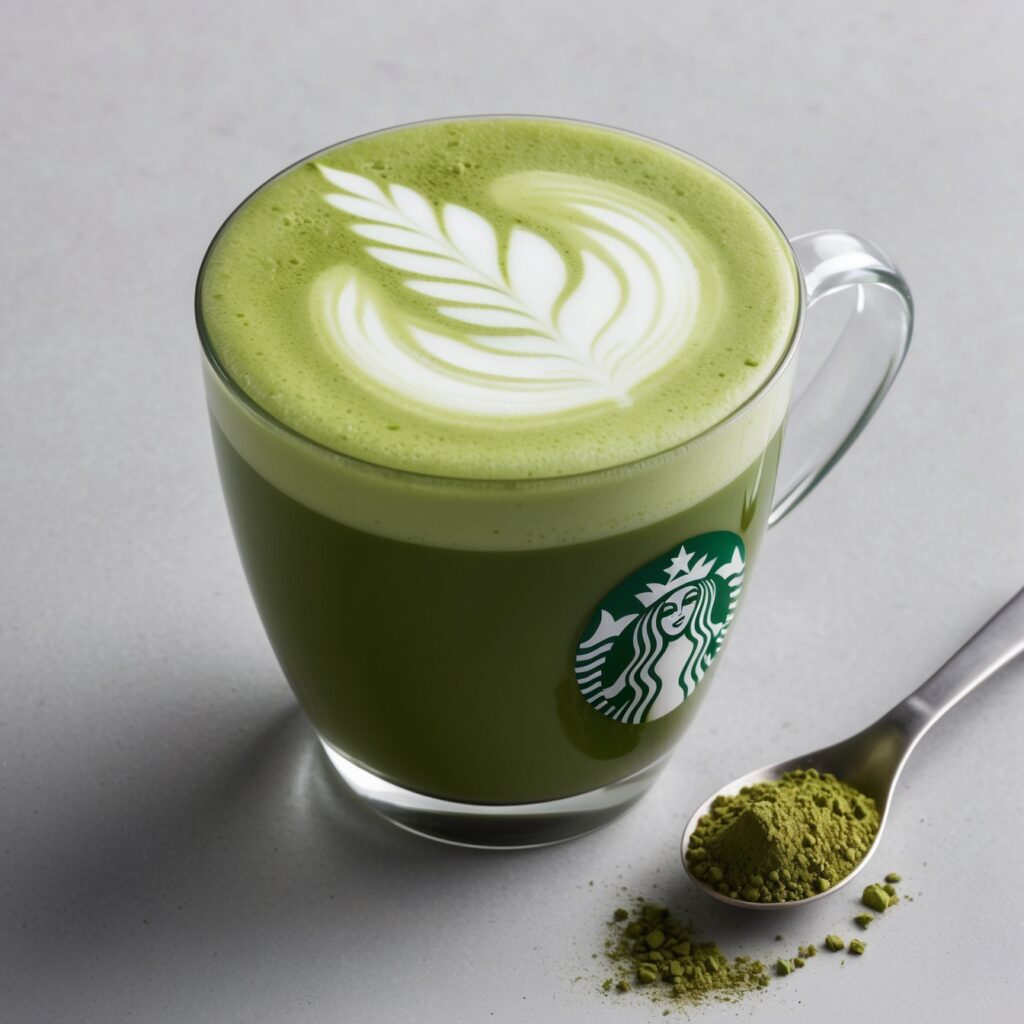
Understanding Matcha: What Is It and Why Use It?
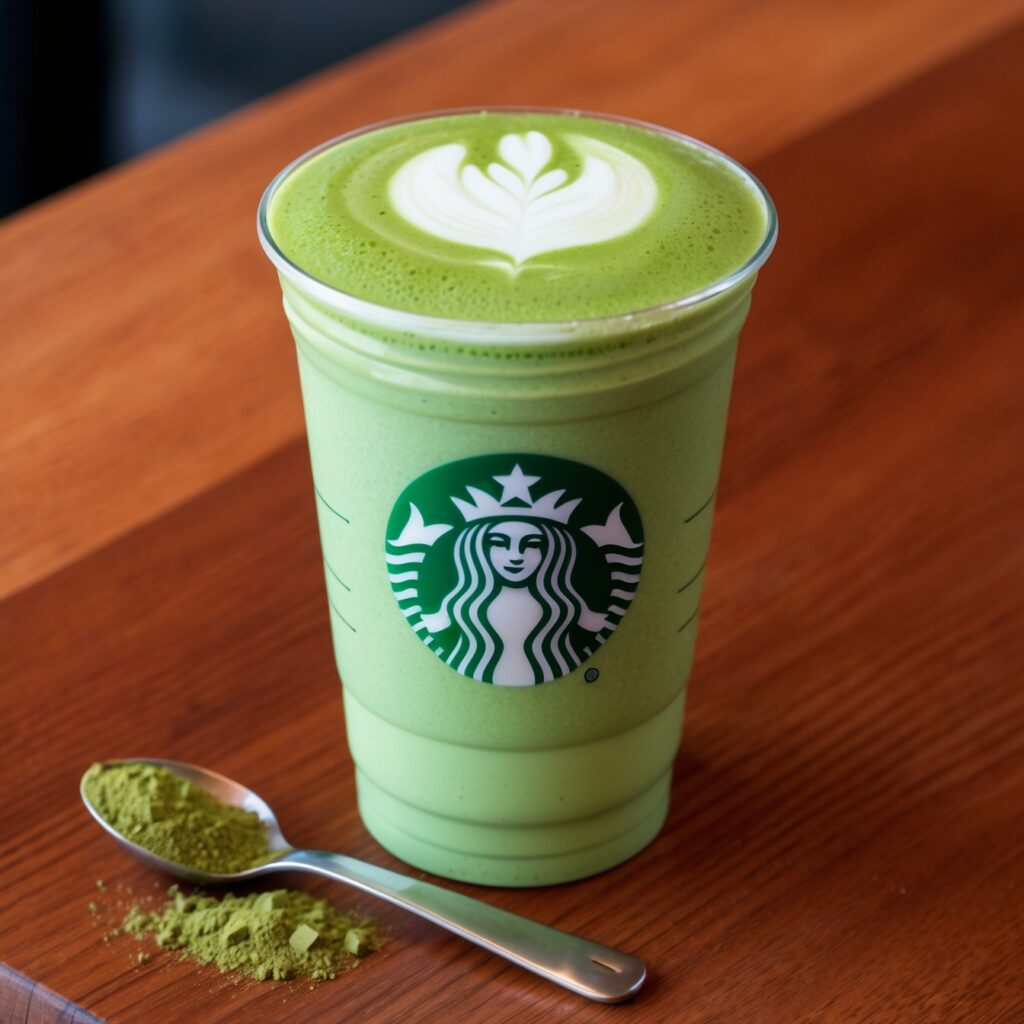
Matcha isn’t just any green tea; it’s a special variety grown in shaded conditions, which boosts its chlorophyll levels and deepens its nutrient profile. It’s made by grinding whole tea leaves into a fine powder, which means you’re consuming the whole leaf and getting a concentrated source of nutrients, unlike regular brewed tea. This makes it higher in caffeine and antioxidants like EGCG (epigallocatechin gallate), which research suggests may support cardiovascular and metabolic health.
How to Select the Right Matcha for Your Latte

There are three main grades of matcha: ceremonial, latte, and culinary. Each has its unique properties:
- Ceremonial Grade: High quality, vibrant green, and more delicate in taste, ideal for traditional tea but can be quite pricey.
- Latte Grade: A step down from ceremonial but still smooth and vibrant, latte-grade matcha is perfect for beverages.
- Culinary Grade: The least expensive and most commonly used in cooking, it has a more robust, sometimes bitter taste and works well in baking but may not be as palatable for lattes.
If you’re making a latte, choose a latte-grade matcha, which offers a balanced flavor without overwhelming bitterness.
Ingredients You’ll Need to Make a Starbucks-Style Matcha Latte
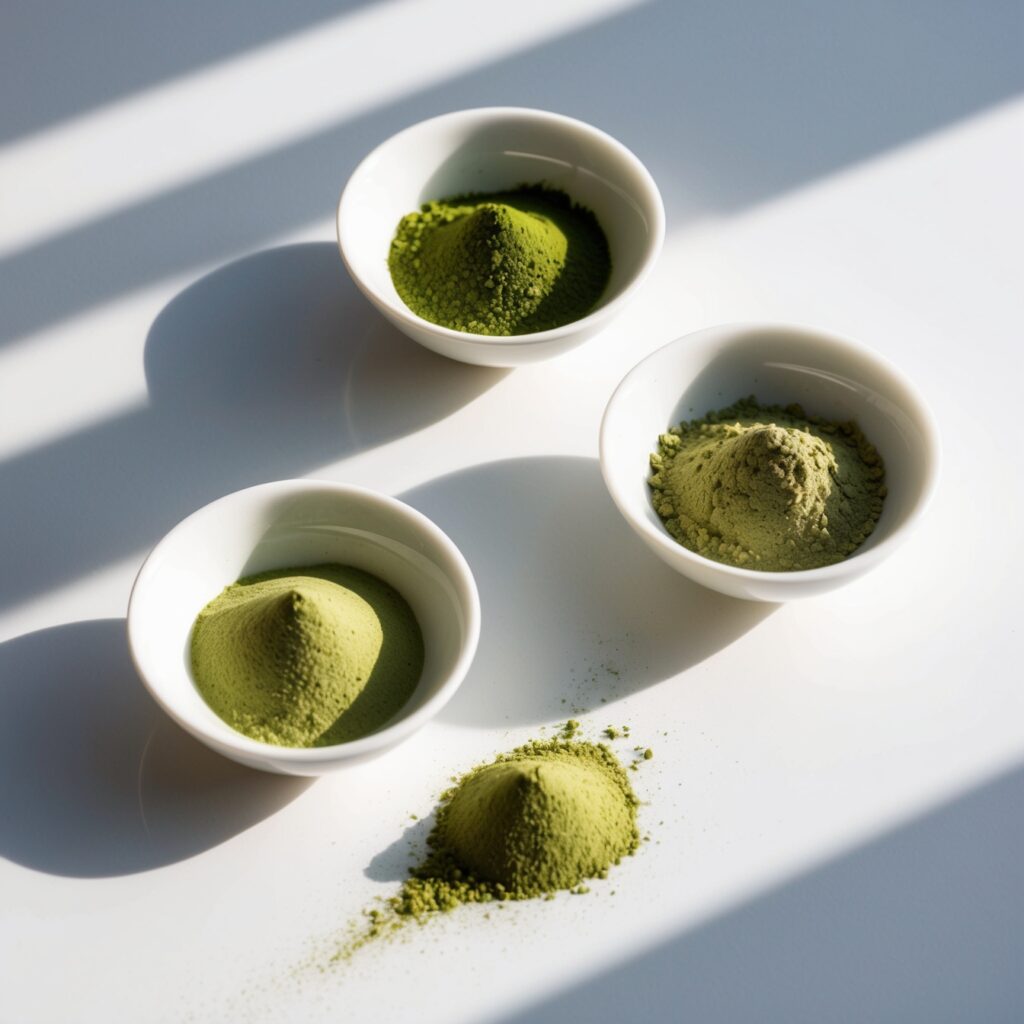
To make your homemade Starbucks matcha latte, gather the following ingredients:
- Matcha Powder: 1-2 teaspoons of high-quality, latte-grade matcha.
- Milk: Whole milk for creaminess, or non-dairy milk like oats, almonds, or soy for a plant-based option.
- Sweetener: Adjust based on preference. Simple syrup, honey, agave, or stevia all work well.
- Water: 2-3 tablespoons of hot water for blending the matcha.
Pro Tip: High-quality matcha makes a huge difference in flavor. Look for matcha that’s bright green, as this indicates freshness and high quality.
Essential Tools for Making the Perfect Matcha Latte
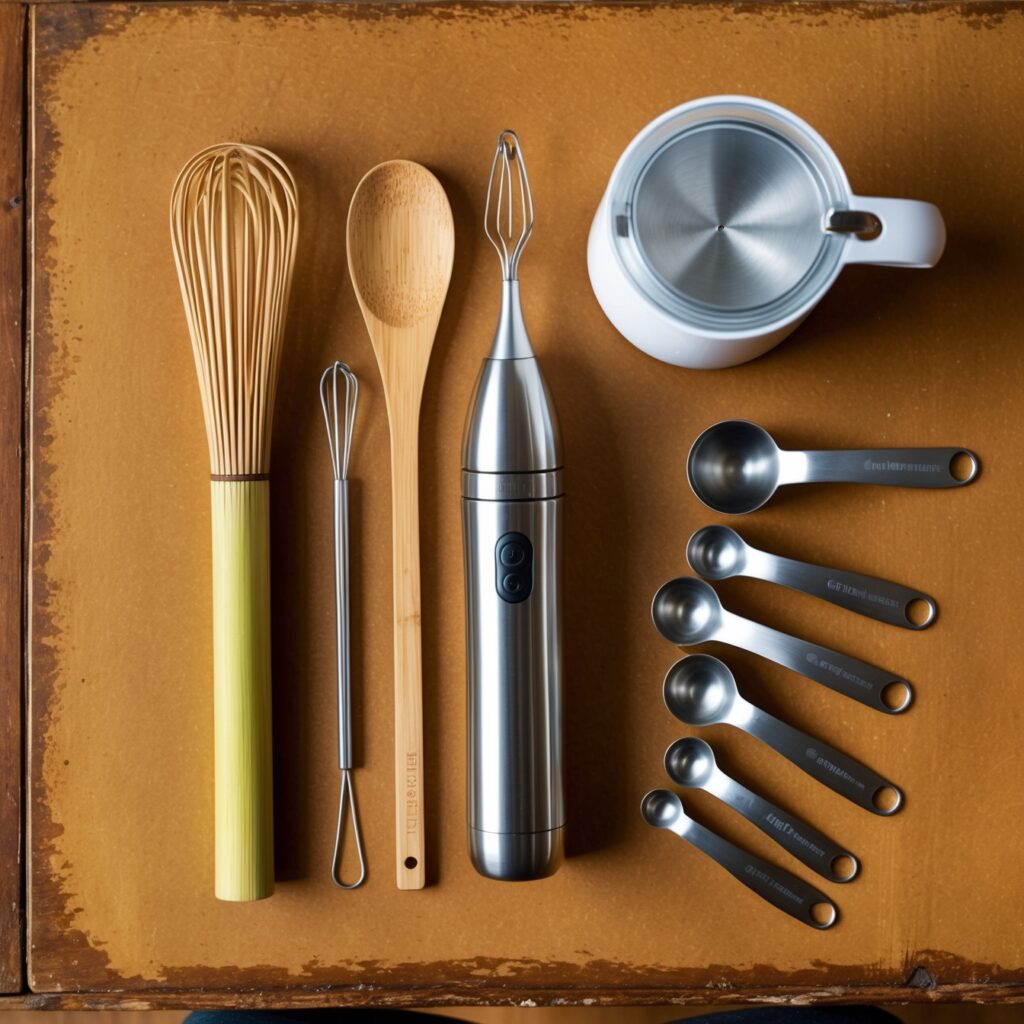
- Bamboo Whisk or Electric Frother: These are excellent for breaking up matcha clumps and achieving a smooth texture.
- Measuring Spoons: Essential for consistent results each time.
- Milk Frother: To create a creamy, foamy milk texture, giving it that Starbucks-like quality.
Step-by-Step Guide to Making a Starbucks Matcha Latte at Home
Step 1: Whisk the Matcha Powder

Place 1-2 teaspoons of matcha powder in a small bowl. Add 2-3 tablespoons of hot water (ideally below boiling to preserve matcha’s nutrients) and whisk vigorously in a zigzag motion using a bamboo whisk or an electric frother. This breaks down clumps and creates a smooth, lump-free mixture.
Step 2: Sweeten the Mixture
Add your desired sweetener to the matcha mix. Adjust to taste; some people prefer a less sweet latte, while others enjoy a bit of extra sweetness. Start with a teaspoon and adjust as needed.
Step 3: Prepare the Milk
Heat 1 cup of your chosen milk until it’s warm but not boiling. If making an iced version, keep the milk cold.
Step 4: Froth the Milk
For a hot latte, froth the milk until it’s creamy and has a layer of foam on top. This step is optional for an iced latte but adds to the experience if you have a milk frother on hand.
Step 5: Combine and Enjoy

Pour the frothed milk over your matcha mixture, stirring gently to combine. If making an iced matcha latte, simply pour over ice cubes.
Hot vs. Iced Matcha Latte Variations

Whether you’re craving a warm, comforting drink or a chilled, refreshing option, matcha latte can cater to both. For an iced version, use cold milk and serve over ice; you might also want to increase the sweetness slightly to counteract the dilution from ice.
Exploring Different Milk Choices for Your Matcha Latte
Milk choice is crucial for your latte’s flavor and texture:
- Whole Milk: Provides a rich, creamy texture that balances matcha’s earthiness.
- Oat Milk: Adds a smooth, slightly sweet flavor that pairs wonderfully with matcha.
- Almond Milk: A smooth, nutty touch that brings a light, refreshing lift.
- Soy Milk: It has a thicker texture that closely resembles dairy milk, making it a popular non-dairy choice.
Each milk type interacts with matcha differently, so experiment to find your preferred match.
Perfecting the Sweetness Level
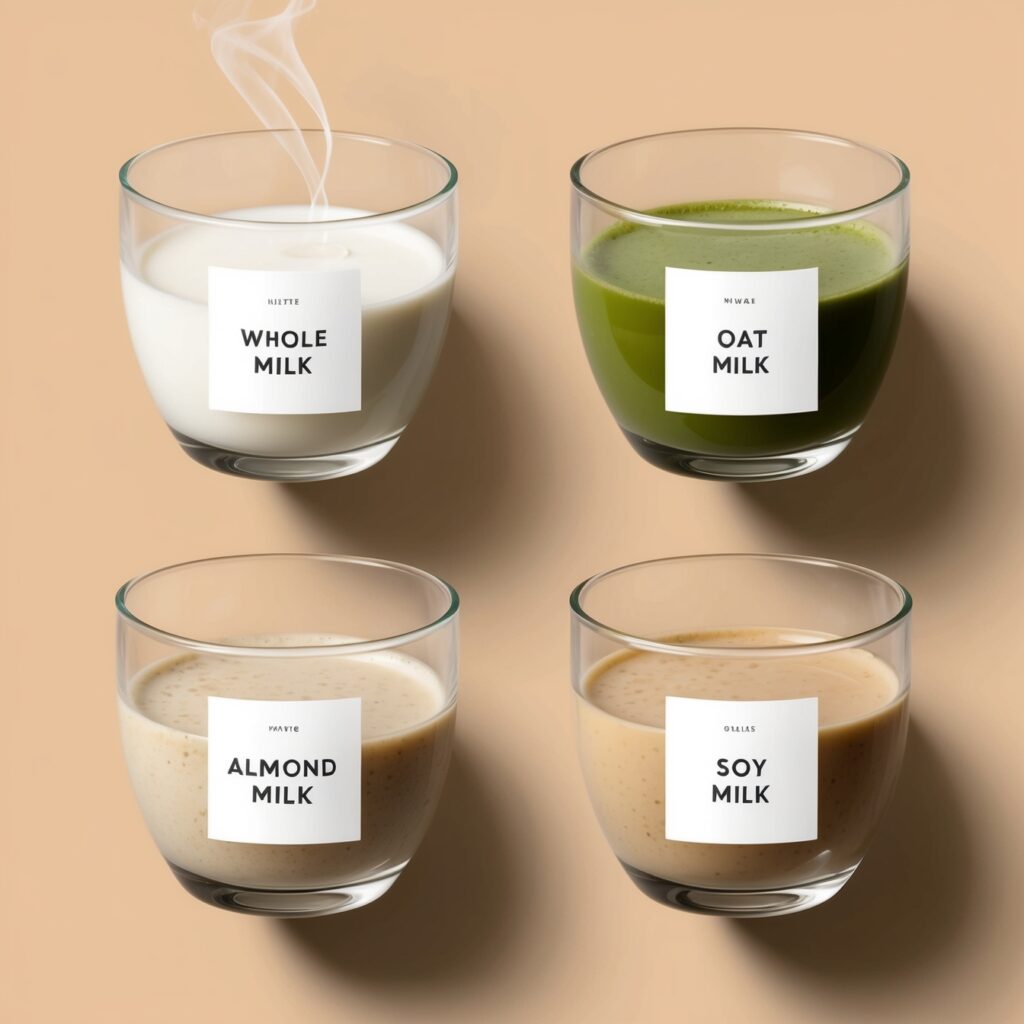
The ideal level of sweetness can vary, so here are some popular choices for customizing:
- Simple Syrup: Starbucks uses liquid syrup, so replicating this can provide an authentic taste.
- Honey: Natural and adds a warm, floral sweetness that complements matcha.
- Maple Syrup: Pairs well with matcha’s earthy notes, adding a rich flavor.
- Stevia: Zero-calorie option; start with a small amount as it can be quite sweet.
Flavor Enhancers to Try in Your Matcha Latte
While the classic matcha latte is delicious, adding flavors can bring a unique twist:
- Vanilla Extract: Adds a soft, warm note to the drink, making it taste luxurious.
- Cinnamon or Nutmeg: A dash of these spices can elevate the flavors, especially in colder months.
- Coconut Milk: For a tropical spin, substitute part or all of the milk with coconut milk.
Troubleshooting Common Issues
- Clumpy Matcha: If your matcha is clumpy, use a small sifter to sift the powder before mixing or blend it with hot water to ensure smoothness.
- Bitter Taste: If your latte tastes too bitter, reduce the amount of matcha or switch to a higher-quality grade.
- Weak Flavor: Add a bit more matcha or use less milk to concentrate the flavor.
Nutritional Benefits of Matcha Lattes

Matcha lattes offer more than just a delicious taste. Here’s a quick look at some of the health benefits:
- Antioxidants: Matcha is loaded with catechins, a type of antioxidant that combats cell damage and may reduce the risk of chronic disease.
- Caffeine Boost: Unlike coffee, matcha provides a more sustained energy boost, releasing caffeine gradually and minimizing jitters.
- Chlorophyll Content: Due to the shade-growing process, matcha is high in chlorophyll, which supports detoxification.
Adding matcha to your daily routine can be a delightful way to boost energy and improve wellness.
How to Make a Healthier Matcha Latte

A standard Starbucks matcha latte can contain a lot of sugar and calories. Here’s how you can make a healthier version:
- Reduce the Sweetener: Use a smaller amount of natural sweeteners like honey or agave.
- Use Low-Fat Milk or Non-Dairy Alternatives: Opt for lower-calorie options like almond or oat milk.
- Skip the Syrup: If you’re trying to cut calories, go for unsweetened matcha, as it has a natural taste that’s satisfying.
Customizing Your Matcha Latte Experience

If you’re making matcha lattes at home regularly, try adding seasonal flavors or adapting your latte to your preferences:
- For Fall: Add a dash of cinnamon, nutmeg, or pumpkin spice for a cozy, autumn-inspired twist.
- For Spring: Mix in lavender or rose water for a floral note that adds an elegant touch.
- For Summer: Go iced with a splash of coconut milk or even blend it with a bit of vanilla ice cream for a creamy treat.
FAQs about Starbucks Matcha Latte

1. Can I make a matcha latte without a frother?
Yes, a frother is optional. You can mix matcha powder in hot water with a whisk, or shake it in a jar with milk.
2. Can I store leftover matcha latte?
It’s best enjoyed fresh, but you can store it in the fridge for a day. Stir well before drinking.
3. What’s the caffeine content in a matcha latte?
A matcha latte has about half the caffeine of a coffee latte but delivers a longer-lasting energy boost.
Conclusion

Mastering the art of making a Starbucks-inspired matcha latte at home is both rewarding and straightforward. With high-quality matcha, the right milk, and a few tools, you can create a refreshing, nutritious drink tailored to your preferences. Enjoy the journey of experimenting with flavors, sweeteners, and milk varieties to craft your perfect cup! Whether hot or iced, your homemade matcha latte is sure to become a favorite go-to drink.
Print
Starbucks Matcha Latte Recipe
- Total Time: 10 minutes
- Yield: 1 matcha latte 1x
- Diet: Gluten Free
Description
Recreate the refreshing Starbucks Matcha Latte at home with this easy-to-follow recipe. Perfect for those looking to enjoy the earthy, creamy matcha latte anytime, tailored to their taste.
Ingredients
- 1–2 tsp matcha powder (latte grade)
- 1 cup milk (whole milk, oat, almond, or soy)
- 2–3 tbsp hot water
- 1–2 tsp sweetener (simple syrup, honey, agave, or stevia)
Instructions
- Whisk matcha powder with 2-3 tbsp of hot water until smooth.
- Add sweetener to taste and mix well.
- Heat milk (or keep it cold if making it iced) and froth until creamy.
- Pour frothed milk over the matcha mixture, and stir gently.
- For an iced version, pour over ice cubes and enjoy.
Notes
Experiment with different types of milk and adjust the sweetness level to customize your latte. Perfect for both hot and iced preparations!
- Prep Time: 5 minutes
- Cook Time: 0 minutes
- Category: Beverage
- Method: Whisking, Frothing
- Cuisine: Japanese-inspired
Nutrition
- Serving Size: 1 latte
- Calories: 120 kcal
- Sugar: 10g
- Sodium: 100mg
- Fat: 3g
- Saturated Fat: 1,5g
- Unsaturated Fat: 1g
- Trans Fat: 0g
- Carbohydrates: 18g
- Fiber: 1g
- Protein: 4g
- Cholesterol: 10mg


1 thought on “Starbucks Matcha Latte Recipe”